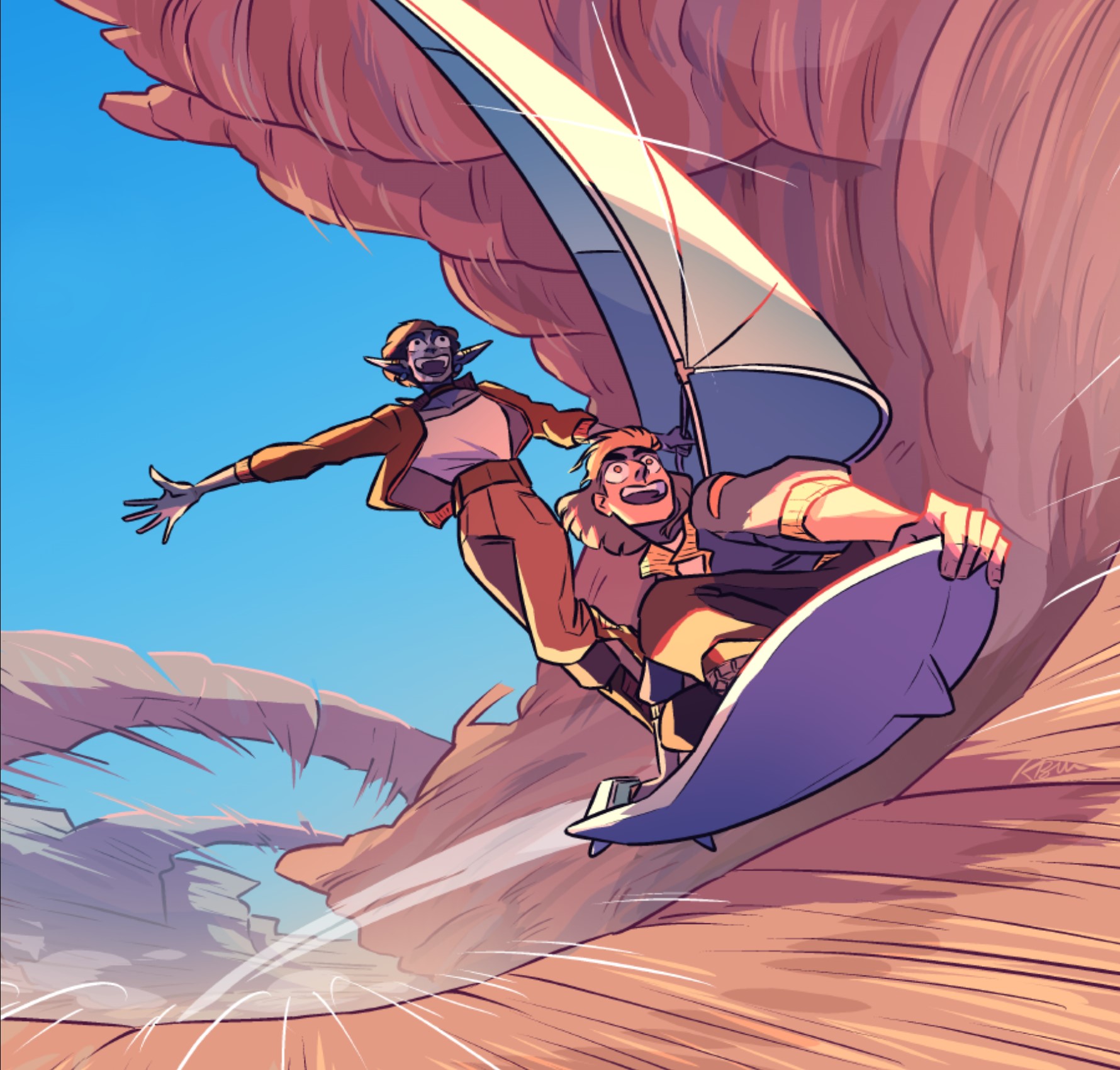Table of Contents Show
In the world of webcomics, anything goes. Talented artists can take whatever wild ideas they want and bring them to life on the internet without needing to prove the marketability of their premise to any traditional publishing establishment. That’s probably why webcomics exist in so many genres. Cozy slice of life webcomics, high-stakes thriller and drama webcomics, and adventurous, rollicking fantasy webcomics all have a place.
The fantasy genre is particularly well-suited to webcomics because many of the craziest premises for stories come from fantasy. The fantasy webcomic authors can take full advantage of their freedom from publishing restrictions. What’s more, the magical phenomena and alien worlds of fantasy really shine in the highly visual medium of comics. And the characters living in those alien worlds can be much more relatable than characters in prose works because of how fantasy webcomics show their expressions and movements.
There are a ton of great fantasy webcomics out there, but if you’re looking to get in on the fantastical fun, these five are a great place to start.
Cut Time
Cut Time is, on the surface, a fantasy webcomic with a highly traditional story. There are mysterious wizards, haughty nobles, and cold-hearted assassins, not to mention ancient creatures and magical artifacts. Cut Time does these familiar elements justice with its nimble panel layouts of beautiful manga-inspired art. Cut Time’s artist, Juby, is a master of this style and has worked on many great anime-style video games; check out her Twitter and Tumblr for more art. In short, if you want to scratch a traditional fantasy itch, Cut Time is one of the highest quality fantasy webcomics for that purpose.
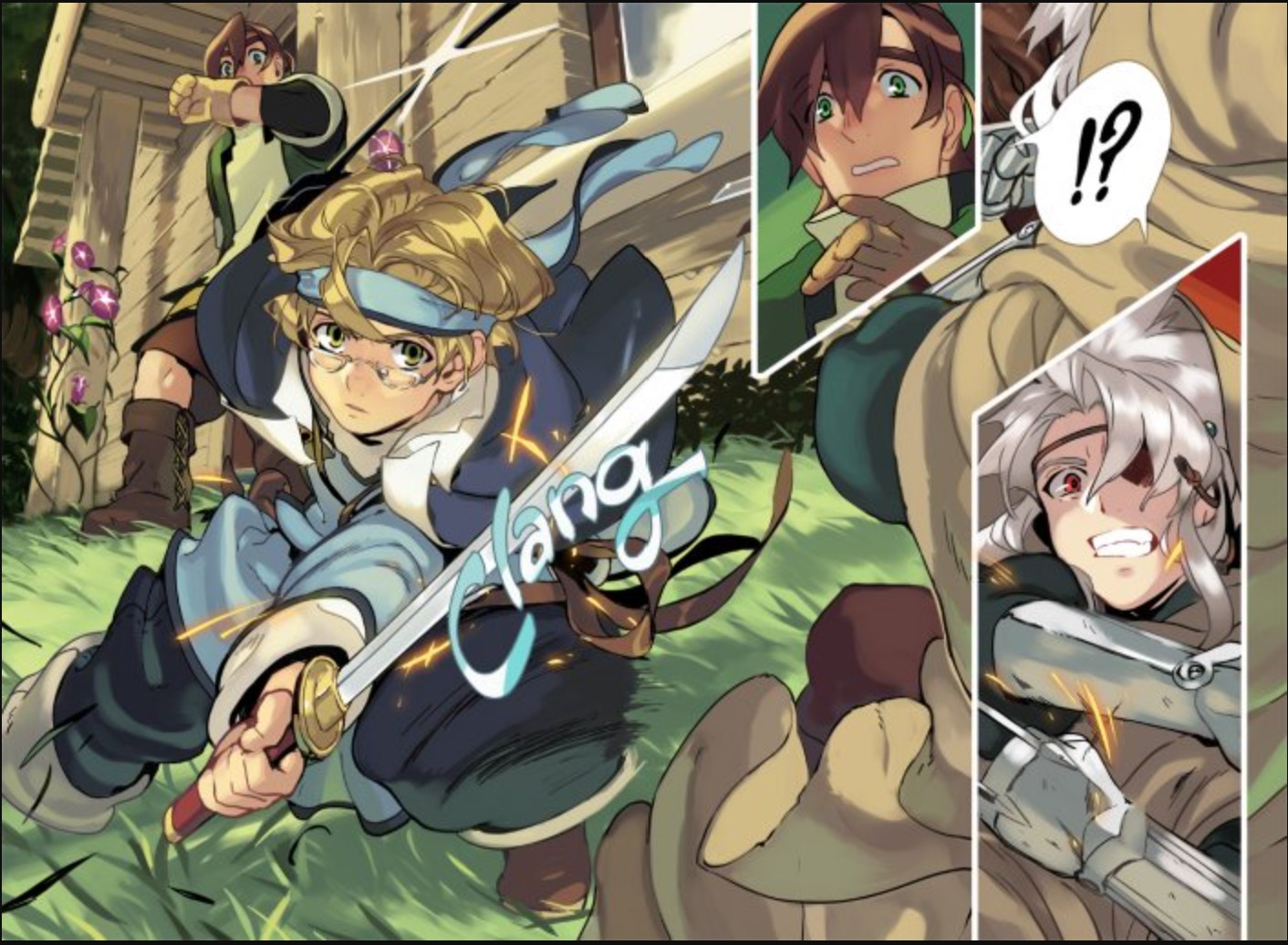
What sets Cut Time apart from other fantasy webcomics is its protagonist. Rel is a chipper young girl traveling the world to fulfill a prophesied quest. But even beyond that, there’s much more to her than first appears.
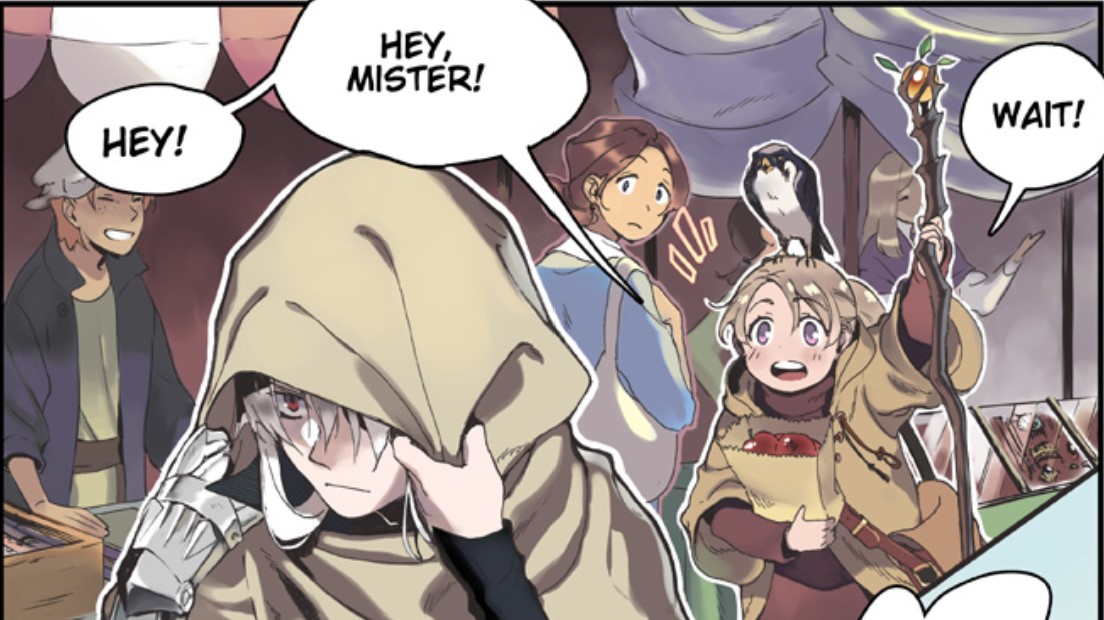
Rel is entirely blind, but she’s magically able to see through the eyes of her pet falcon. We later learn that she’s an expert in the most common type of magic of this world, which is based on runes and the signs of the zodiac and relies on a completely different form of magic, which she channels through her own blood. Finally, some sort of magical curse frequently and randomly transports her across great lengths of time, which grants her wisdom and resourcefulness beyond her apparent years.
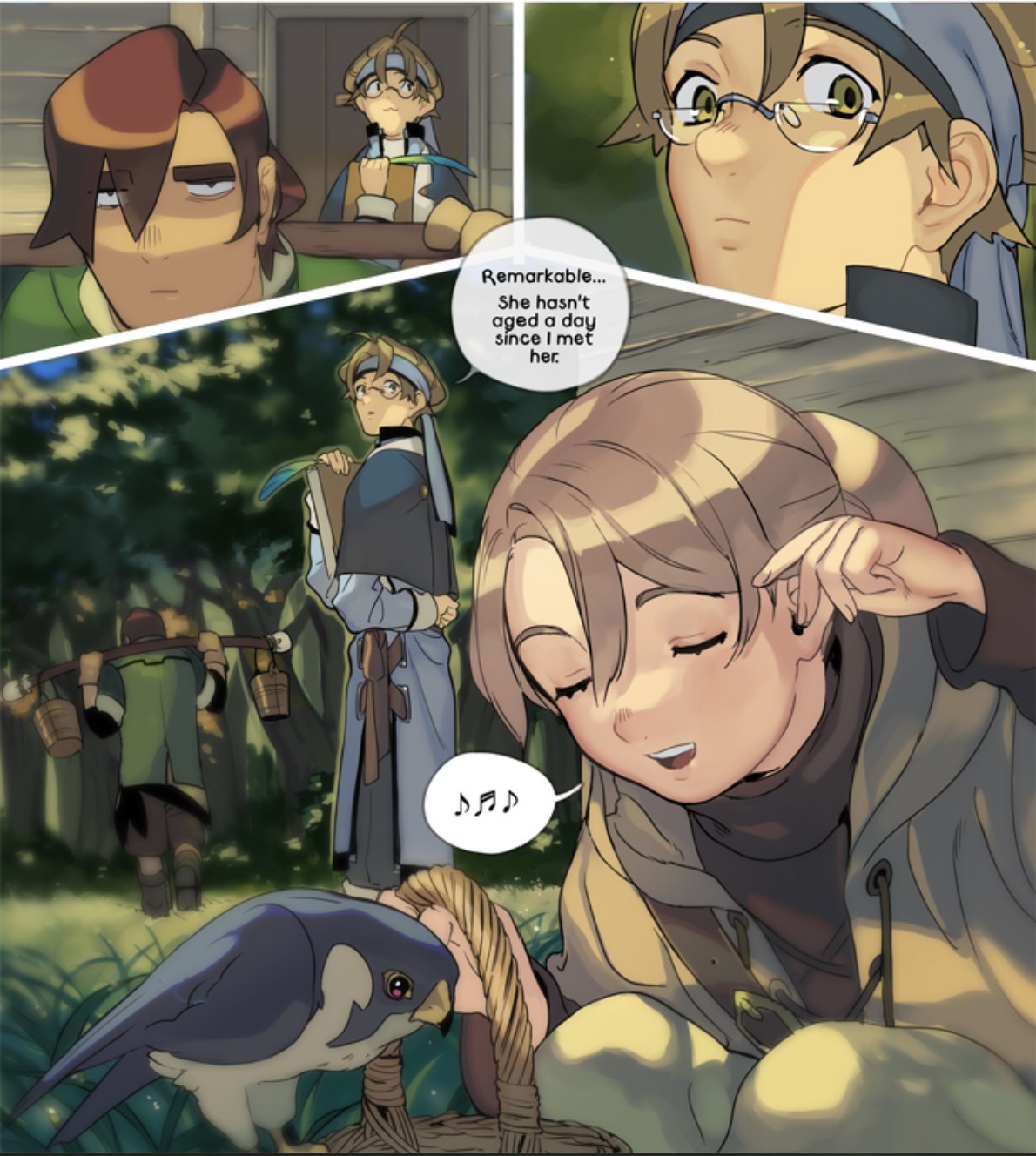
Any of these individual traits could form the basis of a memorable fantasy character, so they seem a little incongruous and overwhelming when they’re combined in one character. However, Rel works in Cut Time because her wildly enigmatic nature complements the familiarity of the story’s other elements. Just when the story seems to be leaning too hard on predictable fantasy tropes, Rel throws in something unexpected to keep things fresh. Unraveling the puzzle of her abilities and backstory is what makes Cut Time an exceptional entry into the world of fantasy webcomics.
Vainglorious
Vainglorious is a fantasy webcomic that also starts from a familiar trope: dragons! Rei, a young dragon with a seriously inflated ego, lives in a mountainous nest teeming with dragons of all shapes and sizes. The story begins when Rei challenges the dragon Queen for her throne… and is swiftly defeated.
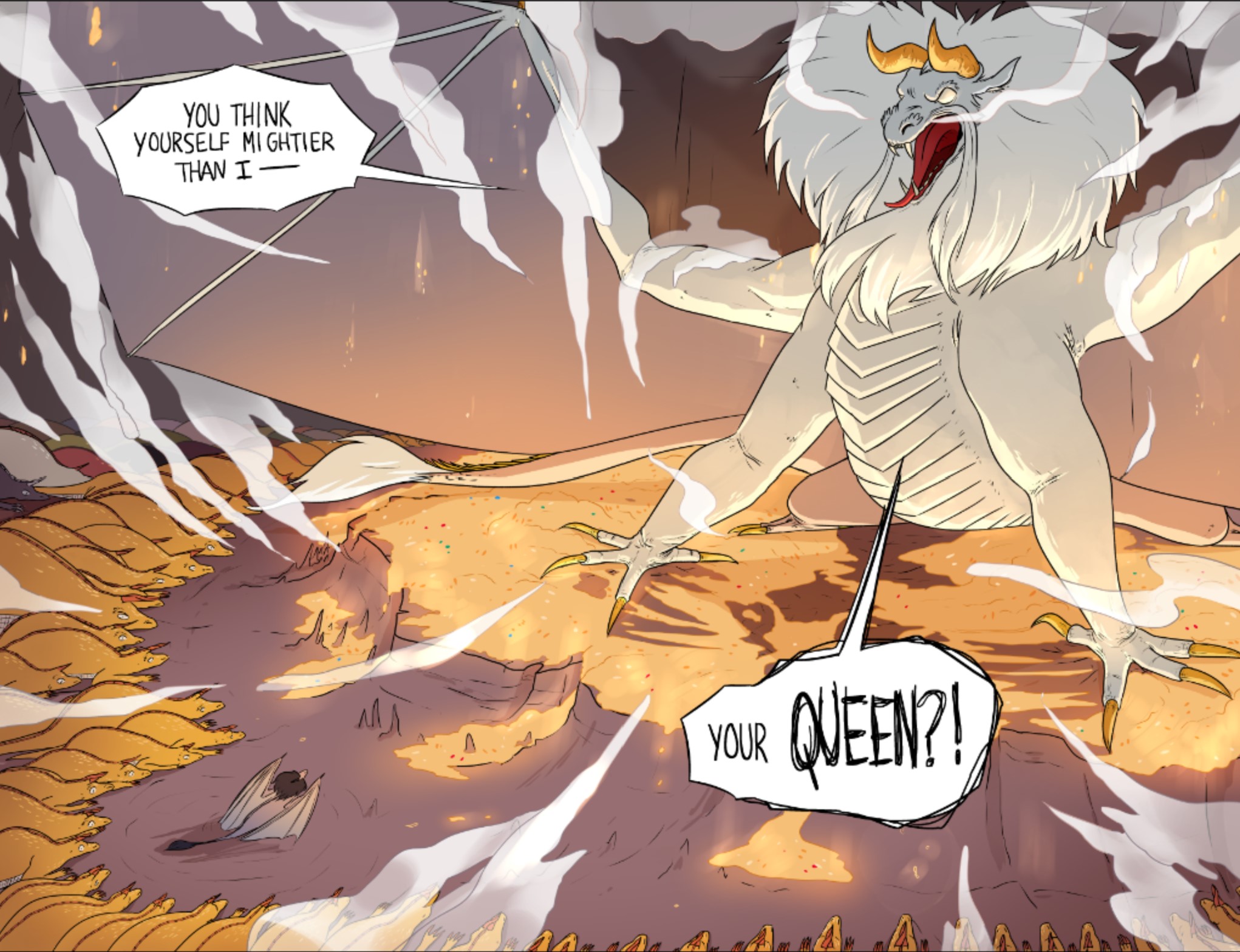
For his hubris, the Queen curses Rei to live in a human body and exiles him from the nest. However, Rei still harbors delusions of grandeur and is determined to regain his dragon form and take the throne.
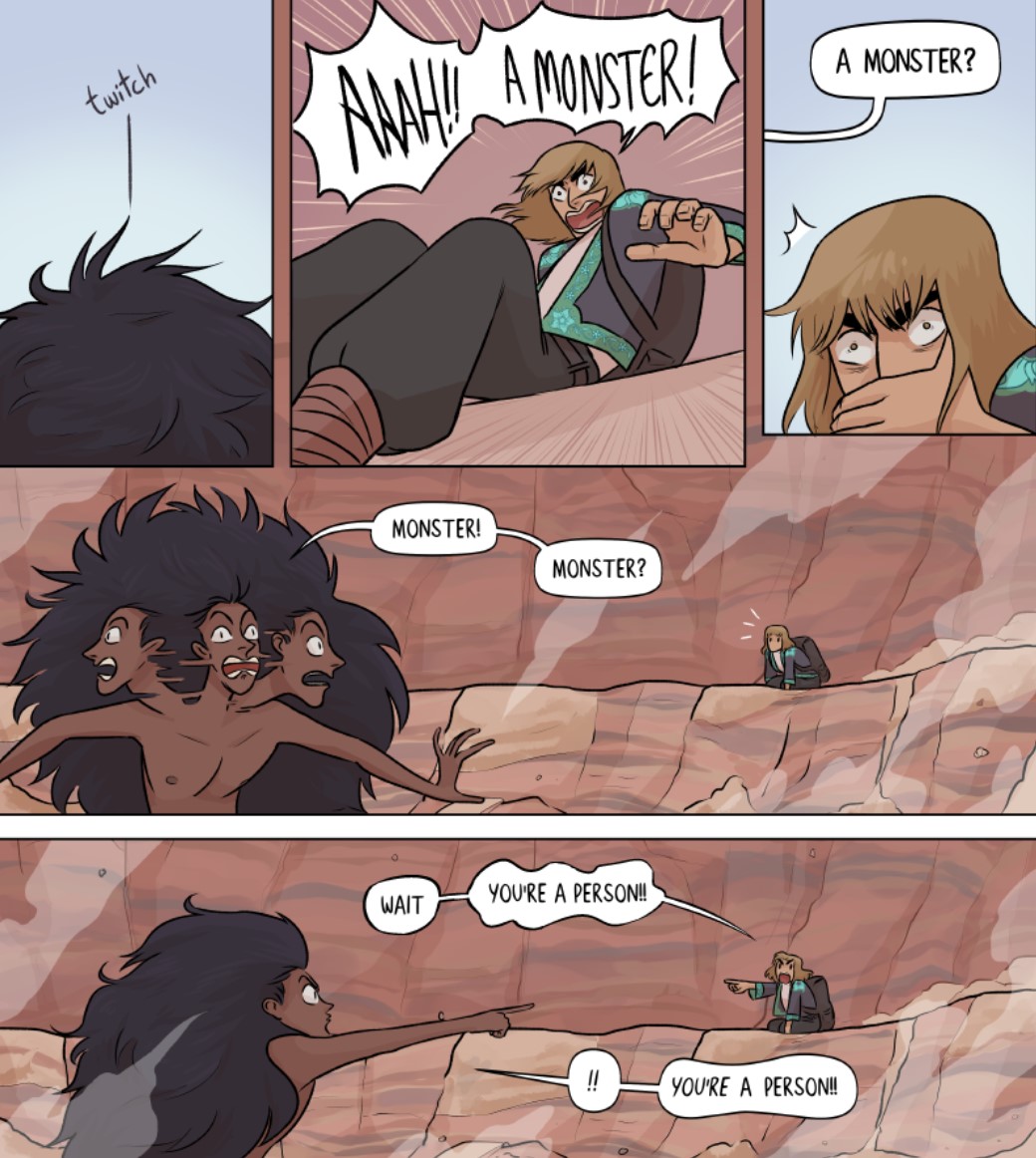
Credit: Vainglorious, Kelly Bull
In contrast to many of the sweeping epics on this list, Vainglorious is an unabashedly goofy fantasy webcomic. The loose, sketchy art style sets a slapstick tone from the very beginning, and further hilarity ensues as Rei and the various companions he picks up along the way bounce off of one another. You can check out Vanglorious’s creator Kelly on Twitter and her online portfolio for more great art and silly stuff.

However, the story is also capable of some inventive worldbuilding that ties into Rei’s character in interesting ways. One town Rei visits is filled with armed dragon hunters who don’t realize that dragons are sentient creatures and would kill Rei on the spot if they knew his true identity. But the very next town is filled with elves descended from dragons who immediately recognize Rei’s true nature and revere him as an honored guest.
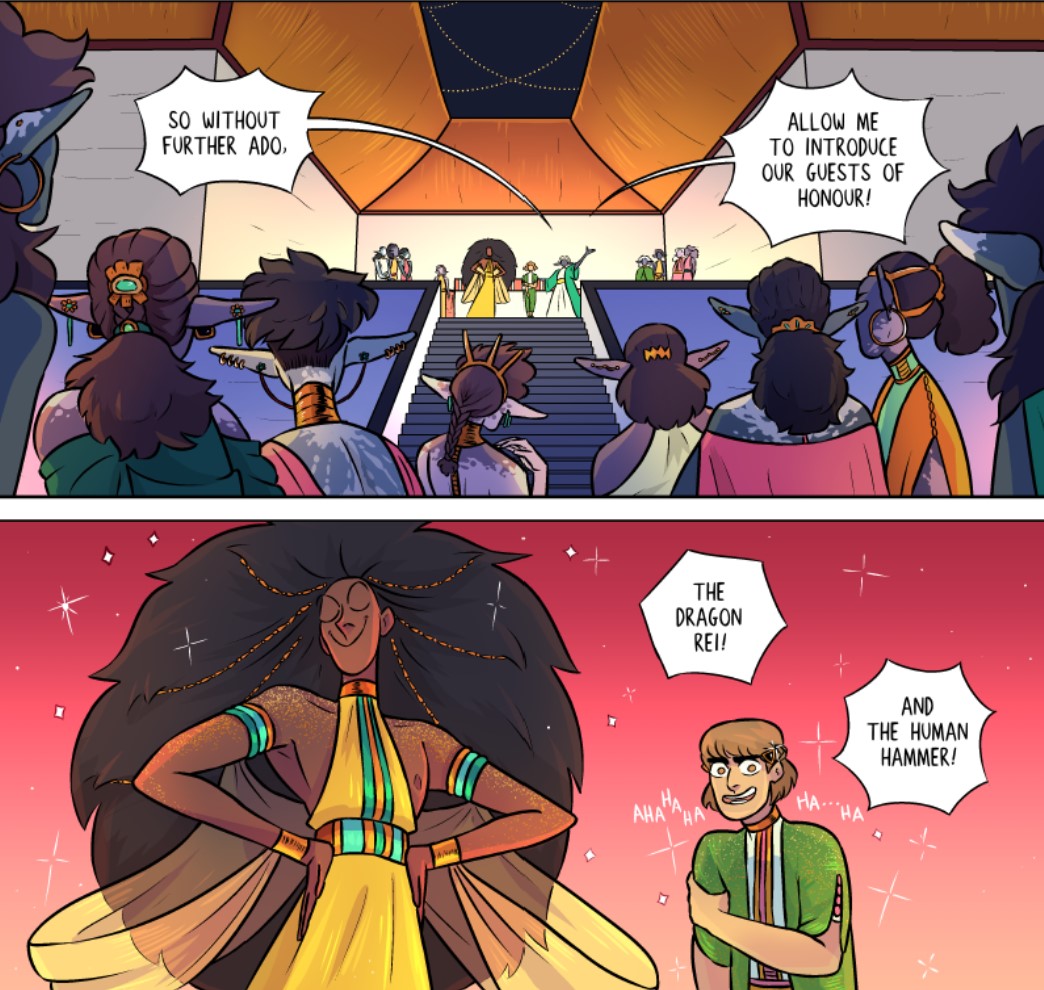
In this world, dragons are elusive but powerful creatures, and every culture relates to them differently. So no matter where Rei’s travels take him, Vainglorious remains a wild ride and stands out among other fantasy webcomics.
Gunnerkrigg Court
Gunnerkrigg Court is unusual among fantasy webcomics because it eschews a fast-paced adventure for a slow-burning tale that offers a fresh take on the magic school genre and brings in science fiction elements. The titular Gunnerkrigg Court is an English boarding school. Still, it’s also a research institution dedicated to studying both supernatural phenomena and highly advanced technology, and it seems to harbor a mysterious, possibly occult agenda.
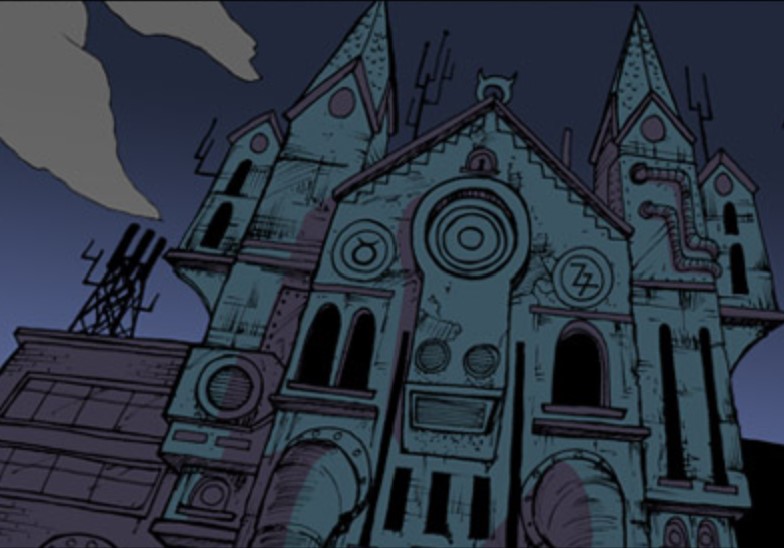
The story focuses on Antimony Carver, a student at Gunnerkrigg Court with strange magical powers and mysterious ties to the court’s history. In the beginning, Antimony is an impenetrable and emotionally distant protagonist, which complements the story’s murky, gothic tone. Few fantasy webcomics have pulled off its alluring and dark atmosphere.
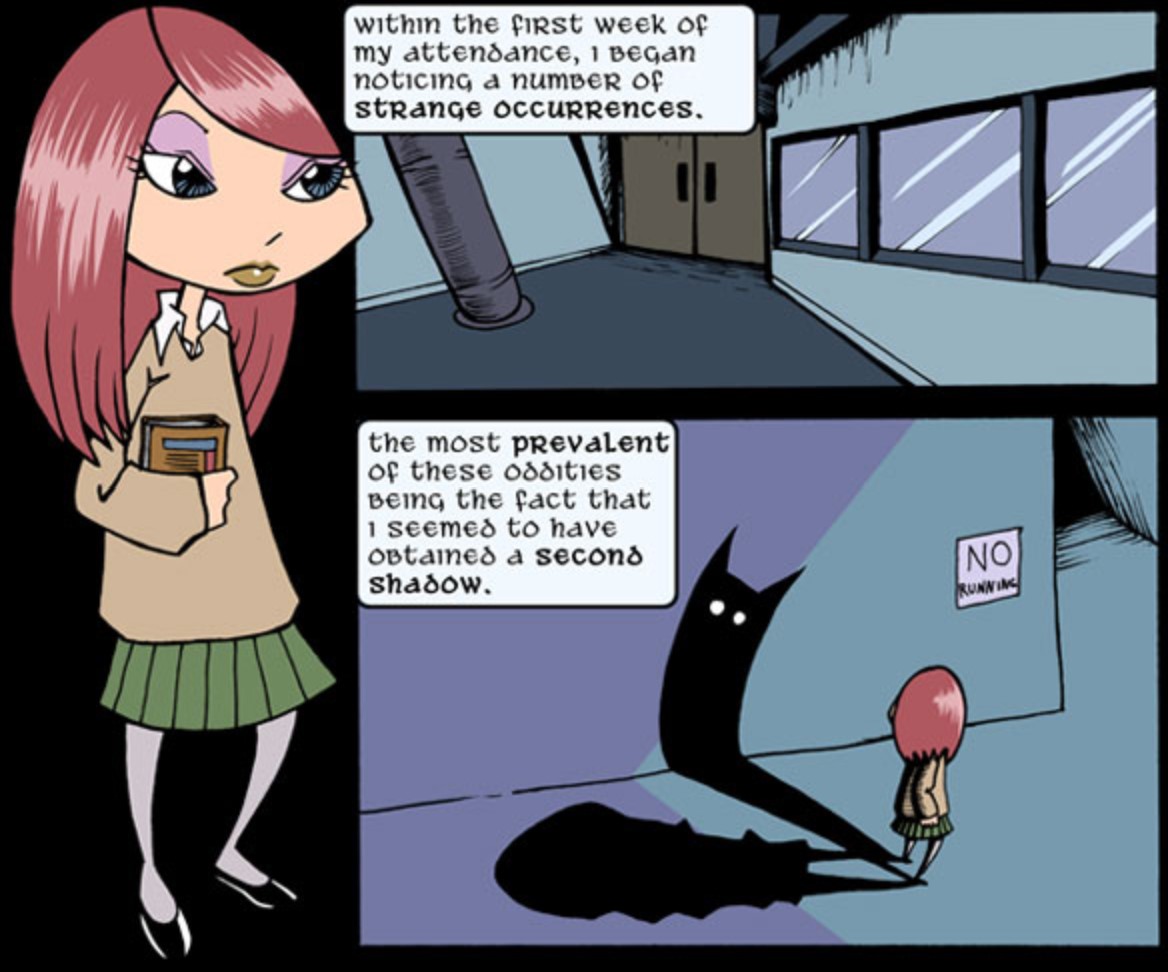
The story has no driving plot, simply following Antimony as she encounters various supernatural creatures, learns more about the court, and eventually makes friends and begins to open up. Because of the meandering story structure, which sometimes feels reminiscent of a slice of life comic and at other times feels like an episodic, monster-of-the-week thriller, readers never know what fantastic things to expect from a chapter of Gunnerkrigg Court. The series is able to work some insane, earthshaking twists into its story, all while pulling readers along with the underlying mystery of the court’s origins and purpose.
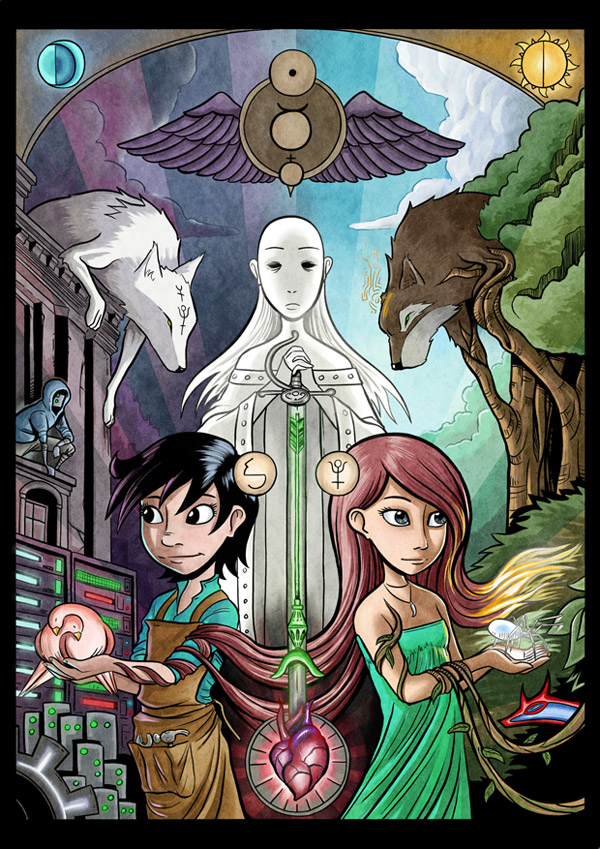
At the beginning of the story, the art is exaggeratedly stylized, resulting in some initially off-putting character designs that have their own charm once you get used to them. However, the art evolves over the comic’s fifteen-year history, gradually becoming more cartoony and then landing at a quasi-realistic, traditional comic book style that still retains the first pages’ moody atmosphere.
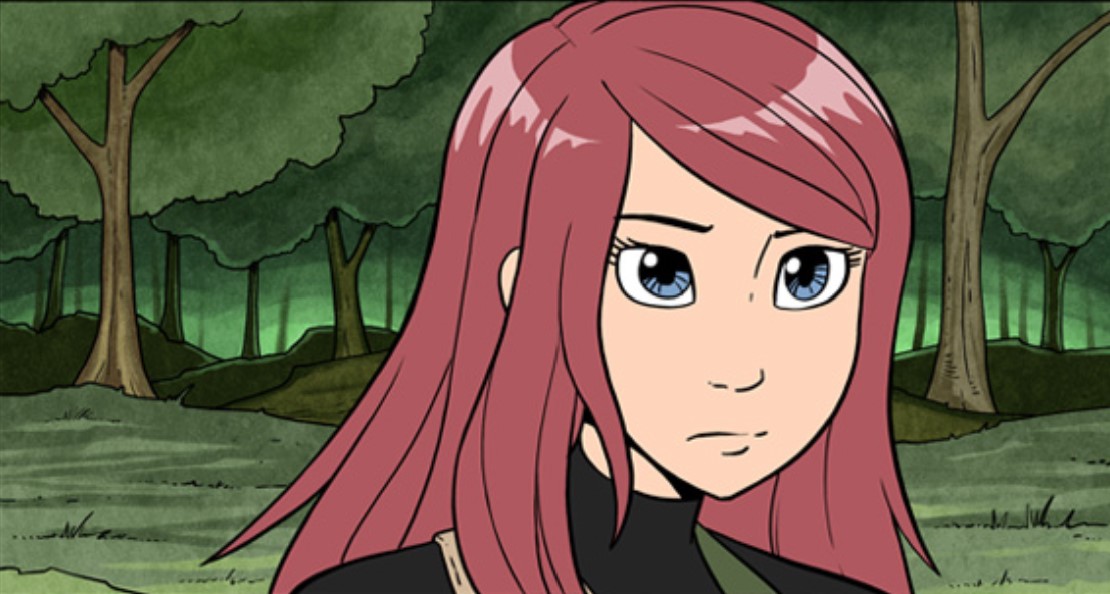
Gunnerkrigg Court is one of the longest fantasy webcomics out there, but seeing the art, as well as the characters and setting, evolve over such a long time is one of the many unique joys of reading it. For more from Tom Siddell, the author of Gunnerkrigg Court, check out his Twitter.
Growing Up Gerudo
Fanfiction has a long and proud history in the fantasy genre, and as such, there are plenty of great fanfiction fantasy webcomics. Among them, Growing Up Gerudo is unique because of its immediately compelling premise and its ingenious use of the minutiae of its source material.
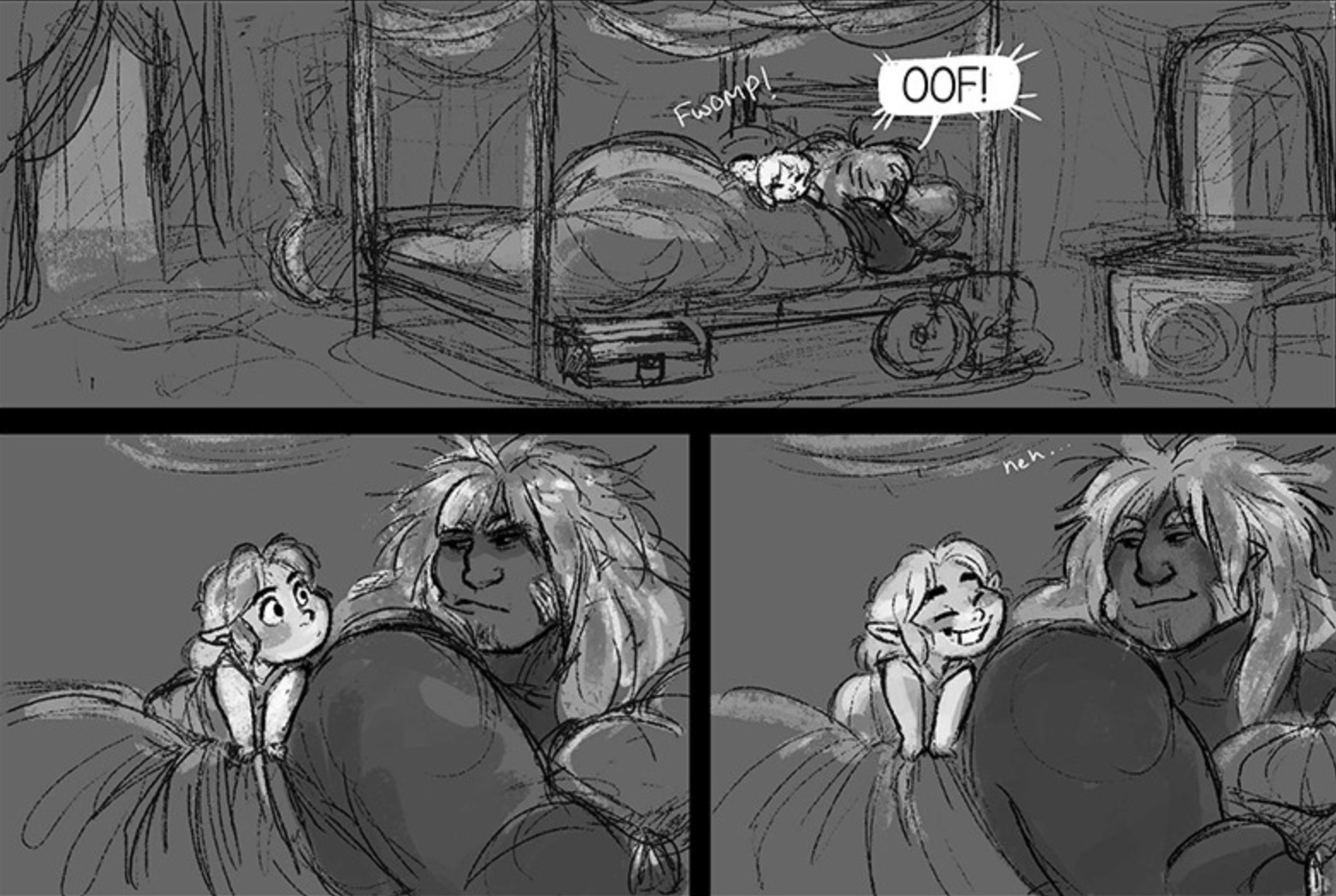
Growing Up Gerudo is an alternate universe fanfiction for the “Legend of Zelda” video game franchise. Ganondorf, the chief of the desert-dwelling Gerudo tribe and traditional series villain, finds the series protagonist Link as an abandoned baby and adopts him. The series follows Link as he grows up and tracks his adorable parent-child relationship with Ganondorf, with the constant knowledge that the two might be destined to battle for the world’s fate.
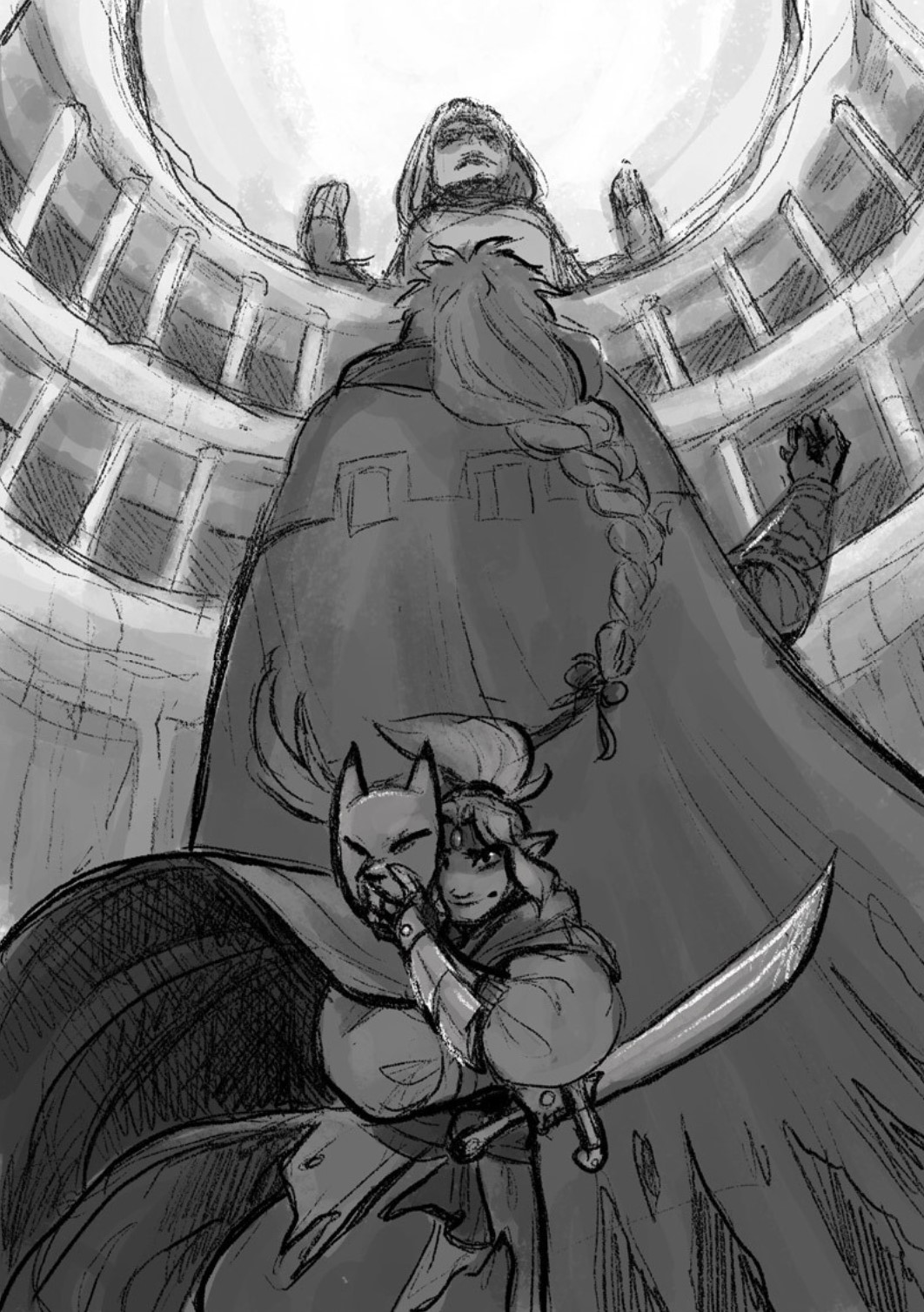
Those familiar with “The Legend of Zelda” might be wondering which “Zelda” game Growing Up Gerudo draws from. However, the series’s genius is that it doesn’t limit itself to any specific Zelda game, which is almost all completely unrelated to one another. The general scenario is closest to “Ocarina of Time,” with Ganondorf leading his people in the Gerudo Valley. The series also incorporates characters and concepts from other games, such as Midna from “Twilight Princess” and Girahim from “Skyward Sword.”
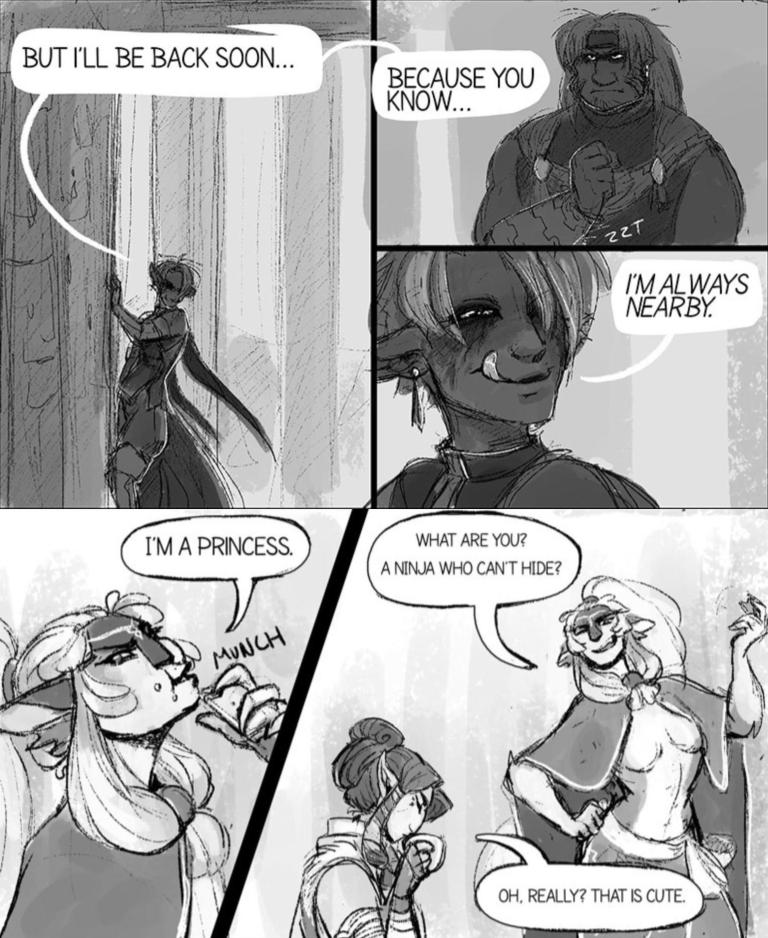
Growing Up Gerudo is able to make these disparate characters fit into a cohesive world, which is something that the actual “Zelda” series could never do. In this respect, authors Junior and Roy are geniuses. Check out Junior at their Tumblr and Roy at theirs! The series is also gripping for those not familiar with “The Legend of Zelda.” The series’ version of the Gerudo, a tribe, made almost entirely of women, is fascinating, as are its political dynamics with the neighboring Hylian kingdom. In addition to being an adorable dad, Ganondorf is also a powerful king with an incurable magical malady, trying to do right by his beleaguered people and his adopted son, who isn’t always readily accepted.
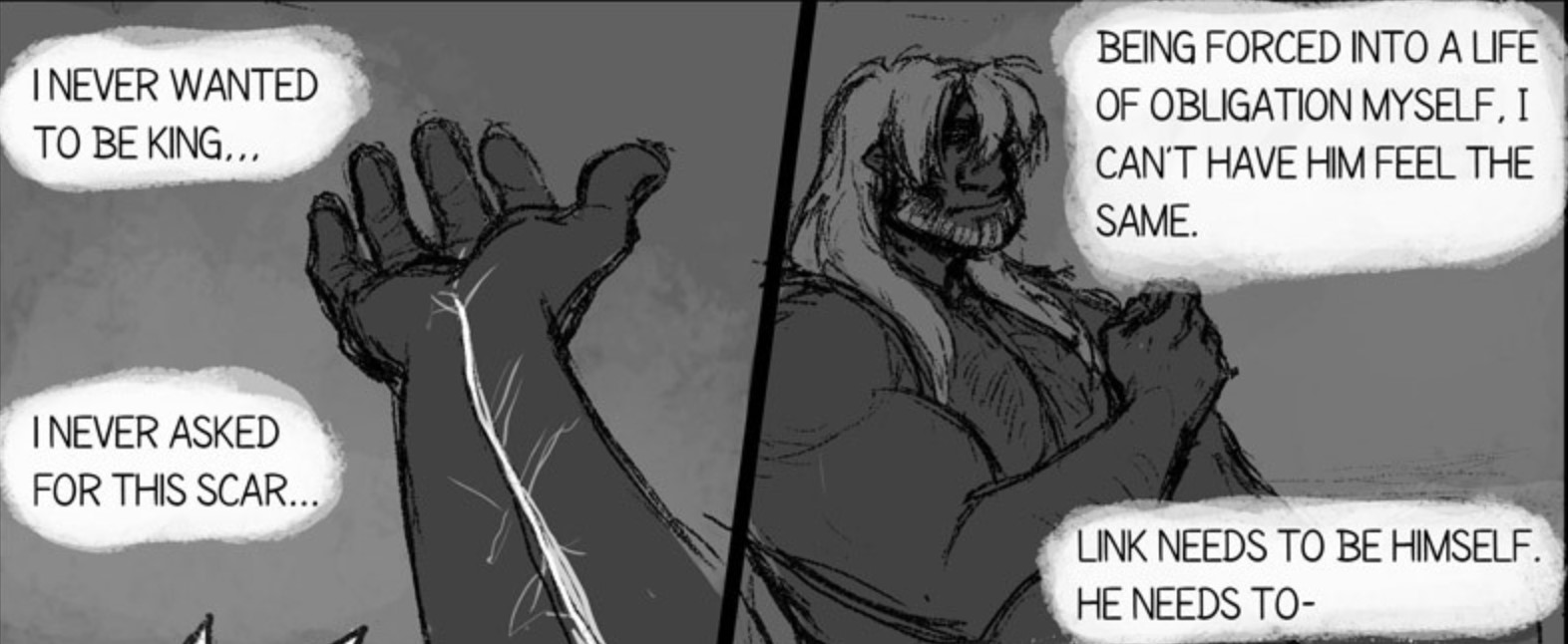
The series’ treatment of its source material is interesting, but it’s the solid fantasy storytelling that makes it truly worthwhile among other fantasy webcomics that create an original world.
Stand Still, Stay Silent
Stand Still, Stay Silent is another fantasy webcomic that combines fantastic influences with science fiction. The story takes place in a post-apocalyptic world where most of the population has been wiped out by a sudden pandemic. The series devotes its first fifty pages or so to document the beginning of the disease’s spread, then jumps ninety years into Earth’s future.
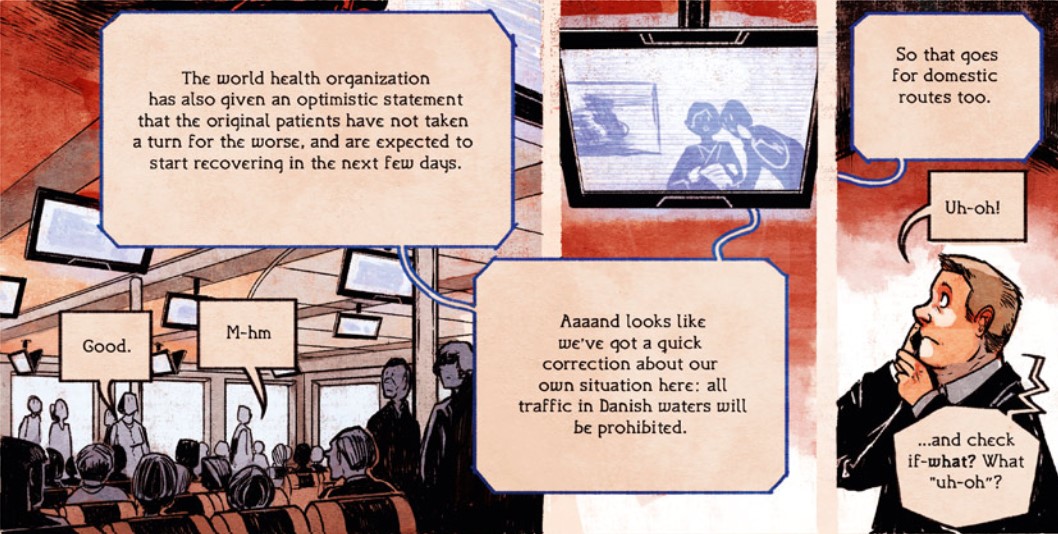
That means it’s impossible to get invested in any characters for a good chunk of the story, but the unfolding apocalyptic narrative is more than enough to pull the reader through this introduction. Many of the story beats resonate eerily with our collective experience with the COVID-19 pandemic, which is incredible since the series began in 2013. In the near future to which the series jumps, the “known world” consists of the Nordic countries of Denmark, Norway, Sweden, Finland, and Iceland. Only small settlements exist. Everything outside of those patches of civilization is known as the “silent lands,” which are overgrown with vegetation and rife with monstrous animals infected by the disease.
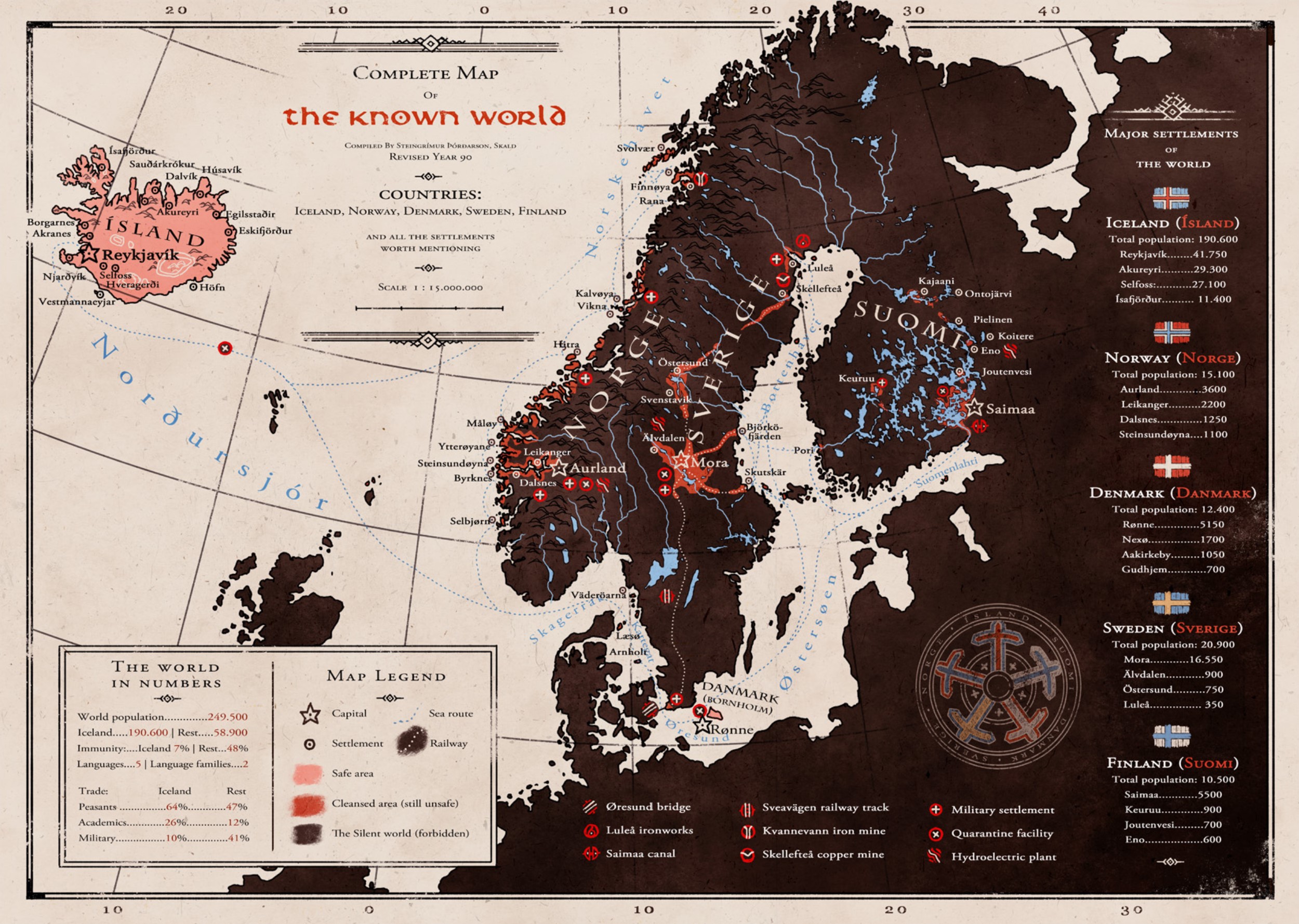
Those animals are called “trolls” and “giants” by the people of the new world, after the creatures in Norse mythology. Similarly, many people have revived the old Norse religion and worship Norse gods, and real magic exists, which is where the story makes the leap from a purely post-apocalyptic webcomic to a fantasy webcomic.
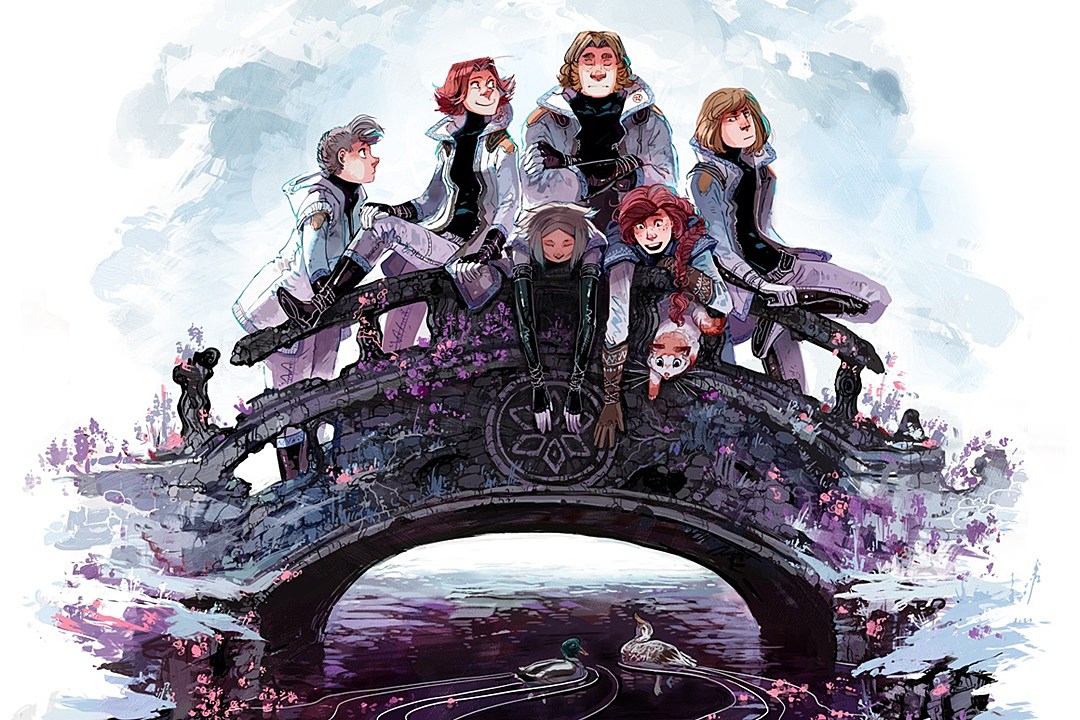
The story proper concerns six lovable goofballs who have been sent on the first-ever expedition into the silent lands, “poorly funded and terribly unqualified,” though they may be. Each character in the main cast has a vibrant personality and a unique set of skills to contribute to the quest. Watching them work together to carry out this unprecedentedly dangerous task is uniquely gripping. Stand Still, Stay Silent has a lot of fascinating worldbuilding elements, but in the end, it’s the characters that make it a special fantasy webcomic. For more from Minna Sundberg, the author of Stand Still, Stay Silent, check out her Twitter!
Read Away!
If any of these excellent fantasy webcomics interest you, click over and get started reading one! They’re all good for a fantastical escape, but many also use their fantasy settings to explore their characters in unique ways while retaining the colorful fun of the comics medium.
